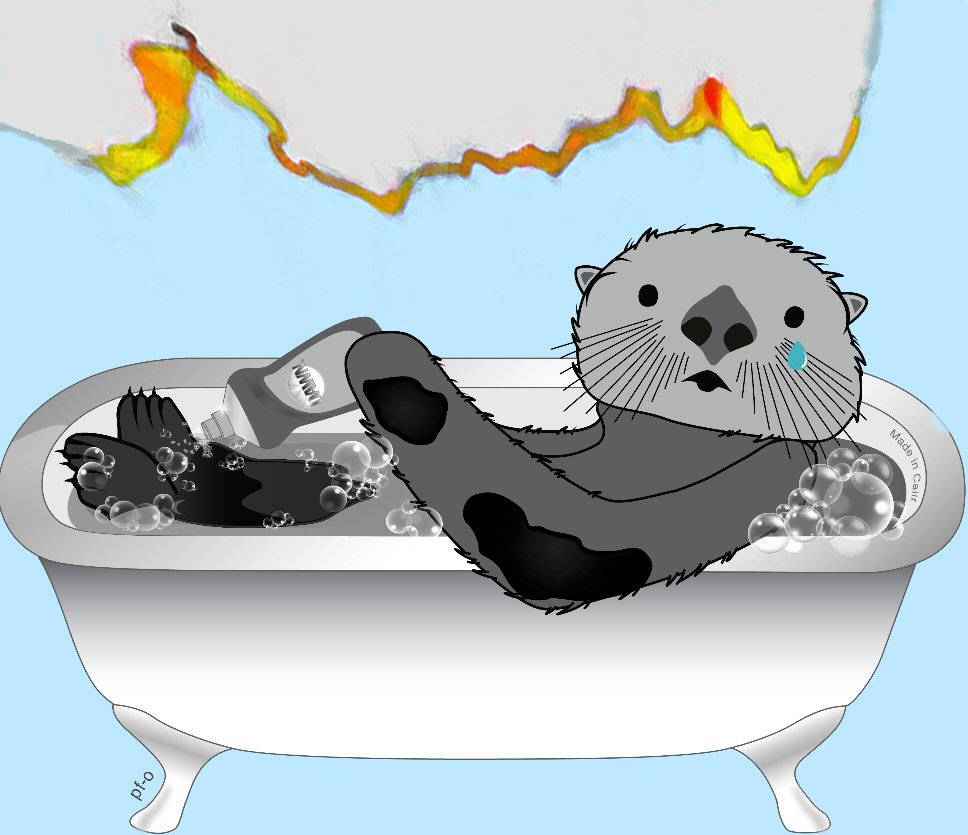More than Cute and Furry, Sea Otters are Ocean Stewards and Deserve Protection
Sea Otter Facts
Sea otters used to be found in an almost continuous range from the coastal waters of the Pacific from Japan and Russia, across the Aleutian Islands and Alaska, into Canadian, and US waters all the way down to the Baja Peninsula. Their numbers were severely reduced in the 1700 and 1800s by hunters who sought the sea otter’s highly prized fur.
Sea otter fur:
● is the densest of all mammals. It consists of up to one million hairs per square inch
● traps air, acting as an insulator from the cold Pacific Ocean water
● keeps the otter warm because unlike whales, seals, sea lions, and walruses they don’t have a thick layer of blubber
● loses its ability to insulate against the cold when coated with oil.
For these reasons it is important that sea otters keep their fur clean. They spend many hours a day grooming their fur, keep it clean and fluffy.
Should Sea Otters Be Protected?
Sea otters are often referred to as a keystone species or a sentinel species. Both titles indicate the importance of sea otters to the health of coastal waters and humans.
As a keystone species, the sea otter is recognized as playing a key role in the health of coastal waters. Sea otters like to eat creatures, like sea urchins and starfish, that eat kelp. Kelp provides cover and food for a multitude of marine animals. When sea otters are removed from the kelp forest, populations of organisms that eat kelp grow out of control, destroying the kelp forest. This is bad for the kelp and the animals that depend on the kelp. Kelp protects the shoreline from storm surges and acts to sequester carbon, a benefit in the fight against global warming.
As a sentinel species, sea otters act as the proverbial canary in the coal mine. Sometimes when otters are ill, it indicates that coastal waters are polluted. An example of sea otters as a sentinel species is when they become ill due to domoic acid. When sea otters consume eat shellfish contaminated with domoic acid, it signal that shellfish are unsafe for human consumption too.
● As a keystone species, sea otters maintain a balance in the kelp forest. Kelp is important as a nursery for ocean creatures, reduces storm surge, and helps to store carbon.
● As a sentinel species, sea otters are an indicator of the health of coastal communities.
Are Sea Otters Protected by Law?
After being hunted to near extinction across their entire range, an international fur treaty was signed in 1911. The treaty that banned industrial scale hunting of fur seals and sea otters was a treaty between Russia, Japan, the United Kingdom, and the United States. In the 1970s, two important federal laws, the Marine Mammal Act and the Endangered Species Act, offered some protection for sea otters in United States waters. Sea otter populations have slowly recovered worldwide but their numbers are a small fraction of what they once were.
I am personally familiar with the California sea otter also known as the Southern sea otter. I did a masters thesis on this population of sea otters and later served on the Board of Friends of the Sea Otter, an organization that became part of Defenders of Wildlife. California’s sea otters were thought to be extinct until the late 1930s when a small group of about 50 animals were found near Big Sur, along California’s central coast. Today there are about 3000 animals. The population hasn’t grown much due to a number of factors and, of course, there is the ever present threat of an oil spill which would cause catastrophic harm to the otters. For these reasons, the California sea otter has been listed since 1977 as a threatened species under the Endangered Species Act.
What Are the Threats to Sea Otter Survival?
● Oil Spills. As mentioned above, the threat of an oil spill is constant. Oil is extracted from and transported throughout the otter’s range. If the oil doesn’t harm the fur, it could contaminate the otter’s food.
● Disease and Parasites. Land-based pollutants such as fertilizer, sewage, household chemicals, pet waste, and kitty litter (YES, KITTY LITTER) threatened sea otters. Cat feces contain a parasite that harms otters. When kitty litter is flushed down the toilet, the parasites enter the wastewater stream and eventually end up in coastal waters where the otters live.
● Boat Strikes.
● Entanglement
● Shark Attacks
● Shootings
What Can You Do to Protect Otters?
● Limit what you send down the drain. Even if you don’t live near the ocean, what goes down your household drain or sewer ends up in a local waterway. Don’t put oil, pesticide, toxic chemicals, or pet waste in the drain.
● Reduce your use of plastics. ALL plastics are serious pollutants. Plastics eventually break down into small particles that make their way into the food that we all eat –
otters, shellfish, and humans.
● Reduce or eliminate using fertilizers. These chemicals are responsible for toxic algal blooms that affect ALL living things.
● Donate to charity. Do your homework first. Not all charities effectively use your donation. Use a site like Charity Navigator to independently review the work of a nonprofit. Three that I recommend are The Marine Mammal Center, the Monterey Bay Aquarium, Defenders of Wildlife.
● Be active. Here are a few of the MANY ways to make a difference. Reduce your use of plastic. Eat sustainable seafood. Seek alternatives to gasoline, household chemicals and chemical fertilizers. Let your legislators know that you support the Endangered Species Act and the Marine Mammal Protection Act.
●Subscribe to the Women Mind the Water newsletter. Subscribe today and receive, as a thank you, a sea otter coloring page. Check out our other news stories.






